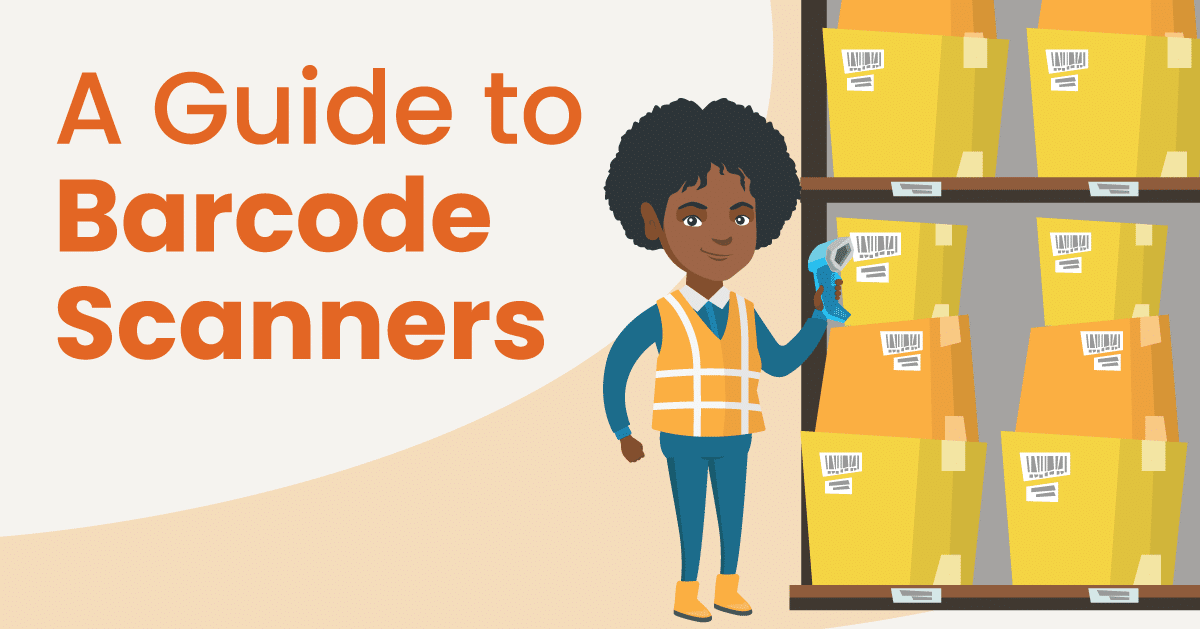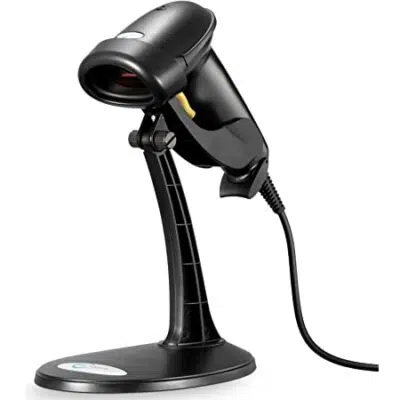
Since its first implementation in 1970, the basic function of the barcode has remained largely the same, with some updated features and capabilities. Almost every business, big and small, uses barcodes for SKU and UPC numbers, inventory management, and facilitating transactions. Thus, barcode scanners are a vital tool for business as they provide faster, more accurate, and more efficient data entry and POS processing.
Barcode scanners work much like the human eye. They use light to decipher empty versus filled spaces on a barcode. This information is captured, then delivered into the processor. The processor converts it into a series of binary code that communicates with the software to relay what item it is representing.
The technology used to capture these barcodes continues to evolve to respond to businesses demands and customer needs. While they use different types of sensors, cameras, and lasers to capture, they all perform the same basic task. But how exactly do barcode scanners work, and how can business owners determine which are the right ones for their needs? This blog will give you an overview of the basics and dive into some more common specific options for barcode scanners.
How Do Barcode Scanners Work?
Barcode scanners capture the reflected light and decode it into a numerical sequence of binary code. Traditionally, barcode scanners use laser or LCD light. By capturing the black and white pattern on a barcode, they process and relay that information back to the POS or computer connected to them.
Sophisticated types of scanners can read a whole barcode at once while more traditional and basic models have to be dragged across in order to physically scan the code. Today, we are seeing an increasing use of camera technology for barcode capture.
These barcode scanners convert the shapes of lines, squares, and numbers into binary code which can then drop data directly into Excel, Accel, and POS software. Thus, they are a vital tool for both inventory management and executing sales.
What Are The Components of a Barcode Scanner
The scanner itself has a three part system that facilitates the capturing and transferring of the information within the barcode:
Illumination System
In order to read the code and relay the image back to be processed, the barcode must be illuminated. This used to be done using traditional lamps. Now barcode scanners will have built-in LED or lasers that act as illuminators.
Sensor or Lens
A light sensor called a “photodiode” takes the image that is collected and converts it into a corresponding electrical signal. It appears and functions almost as a reverse LED, capturing light and putting it into a wire.
The Decoder
Many modern barcode scanners contain decoders built directly into the handle of the gun. These decoders take the binary code that is read by the scanner and convert it into a usable piece of information for whatever software you’re using. Some scanners will require the use of a “keyboard wedge,” which acts as an external decoder between the actual scanner hardware and the computer.
Types of Barcode Scanners
Scanner capabilities and prices differ greatly. The cheapest pen scanners on eBay are less than $10, while some supermarket-style scanners can cost several thousand dollars. Generally, the more you pay for your scanner the more capable it will be to read imperfectly printed or displayed barcodes.
For example, if there are slight blemishes and misprints on a barcode, cheaper models might have problems reading the information. In addition, more basic models require closer contact and alignment and won’t be able to scan cell phone QR codes at all.
Here are some different types of scanners:
1D Linear Scanners or Laser Scanners
1D refers to a type of barcode. Using UPC and SKU numbers, they hold up to a few dozen characters, requiring more letters and numbers as more information is added. 1D linear scanners are often “gun”-shaped and have been in use since the mid-1970s. They require close proximity (a few inches to up to a few feet) to the barcode to successfully read them, using lasers as a light source to relay the image back into the scanner.
1D Image Scanners
These use imaging technology instead of lasers to capture barcodes. This charge-centered device (CCD) uses hundreds of light sensors and functions similarly to a digital camera. They are technologically superior to linear scanners as they are faster, better at reading poorly printed or damaged barcodes, and require less direct distance for scanning. However, 1D scanners cannot read barcodes that are displayed on phone screens because they don’t reflect back the image.
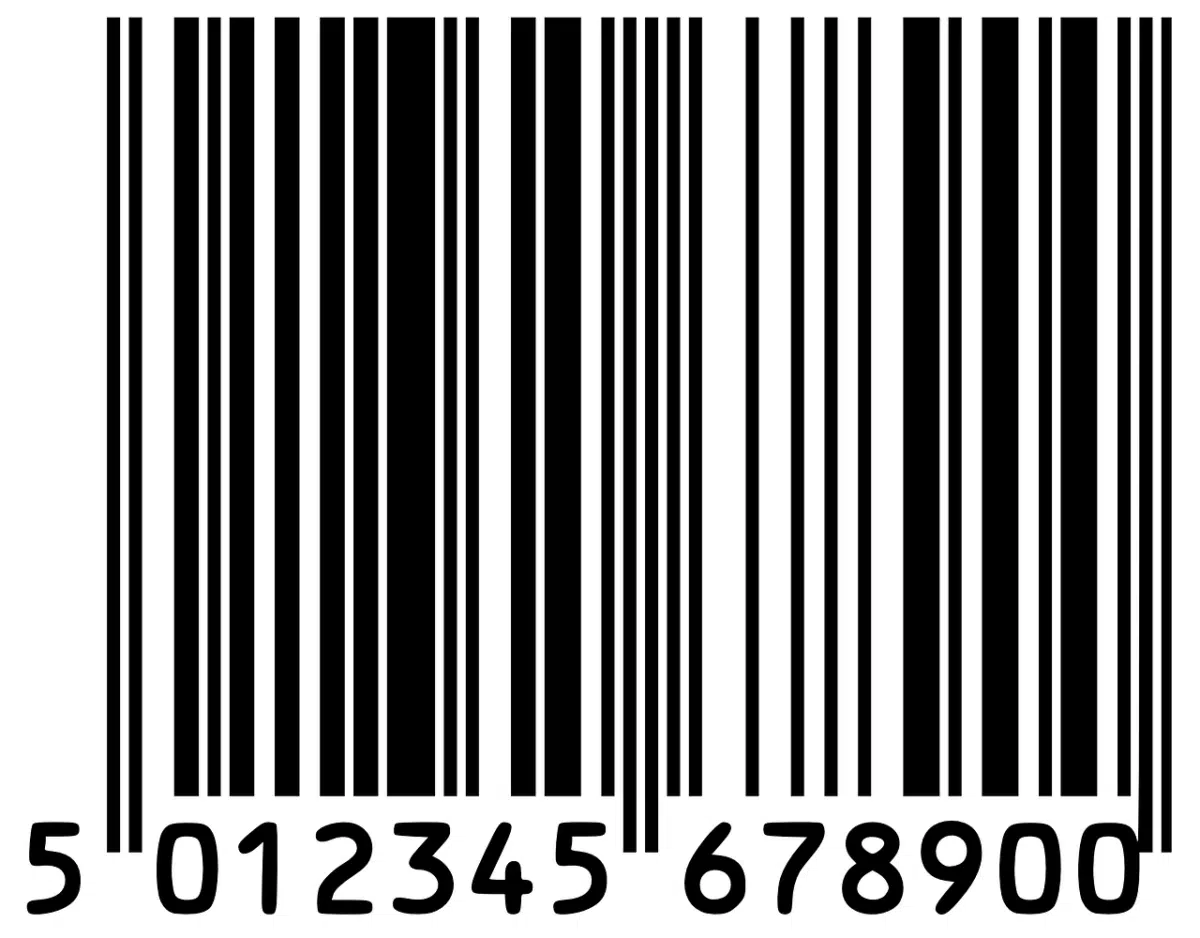
2D Camera-Based Scanners
With two-dimensional reading capabilities, these scanners read 2D barcodes that are both horizontal and vertical. This allows them to contain more information – in this case, up to 2000 characters. They also implement shapes and patterns such as squares and hexagons. As such, 2D barcode scanner captures contain much more information, such as URLs, loyalty programs, images, voice recordings and more.
But how does a 2D scanner work? They function like modern camera technology to capture the code, then decode it with an algorithm to relay the information back to the computer. Of course, 2D scanners can also read and function for 1D types of barcodes.
Most importantly though, 2D image readers can capture barcodes from cell phones. This functionality is a massive asset for companies that use mobile ticketing or email/SMS coupons.

Types of Additional Scanner Hardware
Different types of scanner hardware are available according to individual needs, such as mobile use durability, handheld scanners, stationary devices, price range, scanner range, and more.
Here are some types to think about:
- Scanner Pens
- Portable Scanners
- Rugged Scanners
- Presentation Scanners
- In Counter Scanners
- Omnidirectional Scanners
- Smart Scanners
Scanner pens
These are the most basic and least expensive barcode scanners. They look like oversized pens, and require direct contact with the actual barcode. Scanner pens can be plugged directly into a laptop USB device to function.
While they are durable and less prone to environmental hazards like dust and dirt, they are much slower and are really only useful for very low scanning needs.
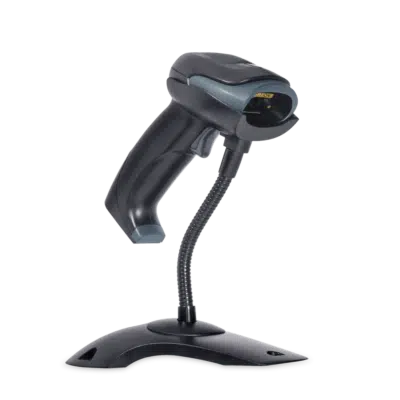
Portable Scanners
Portable wireless scanner guns can be very useful for situations that need mobility. Do you need to scan large heavy items like furniture? Do you need a scanner to use for inventory in a warehouse or large retail floor? Having the ability to move around with the scanner can be a huge advantage in these contexts.
Rugged Scanners
For warehouses and hardware stores there are rugged scanners that guarantee protection against drops and other forms of wear and tear. If you have employees moving around frequently and doing inventory in a more industrial environment then these types of rubberized scanners are a better fit, ensuring longer life and durability.

Presentation Scanners
These sit in place and require customers to make contact with the barcode to complete the capture of the information. Presentation scanners make more sense for places that have ticketing, smaller items, or cell phone QR codes. These also make it easier for employee use because they don’t have to aim and push a button every time a guest approaches the POS system.
In-Counter Scanners
The big glass laser scanners that you see at the supermarket are referred to as “in-counter scanners.” Built right into the cashier’s counter, they are best suited for conveyor belt situations in which a large number of items are being scanned in a row.
Omnidirectional Scanners
Most of the presentation and in-counter models will have omnidirectional capabilities. This means that they use Lissajous curve lasers that read and process barcodes from any angle and direction.
The employee or self-checkout customer can simply wave the item barcode past the scanner without having to perfectly line it up. Having this capability facilitates a much faster and easier scanning process and shorter checkout time.
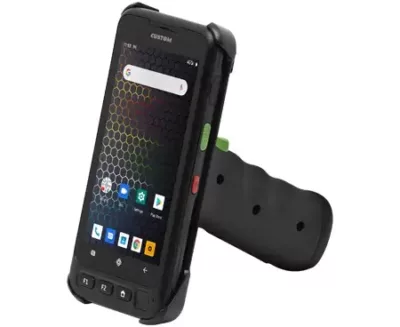
Smart Scanners
The latest development in scanner technology are mini-computers that have camera capture capabilities along with memory, wifi, and inventory applications. These portable smart scanners can do end-of-day (EOD) batches and perform many functions that sync to your POS or inventory management system.
They can also use LTE or memory storage to portably scan tickets outside of a concert venue, theme park, or vineyard far away from POS terminals.
KORONA POS is very user-friendly. You can customize the interface to conform to your business needs. Customer Service is in the United States, always accessible, and always awesome. We love that we can fit it into our scale of business and grow with it.
-Darlene P.
Find The Right Barcode Scanner With KORONA POS
Barcode scanners are an integral part of your company’s POS system. Reach out to KORONA POS today, and we will work with you to optimize your inventory management and streamline your checkout processes with the best scanner for your business.
FAQs: Barcode Scanners
The scanner captures the barcode either by light reflection or by camera, binarizes the code and then decodes it into meaningful data for the software or POS it is connected to.
Depending on the type and capability, barcode scanners read both traditional one-dimensional (1D) bars, and/or two-dimensional (2D) bars such as QR codes.
There are three main methods to barcode scanning: laser, CCD (charge-centered device), and camera-based. The most commonly used scanners are lasers that relay light back into the device to read the black and white spaces in the barcode. The CCD style is similar but uses a series of small LED lights. Finally, the newest technology uses digital camera algorithms to capture and analyze the barcode.
Mobile barcode scanners work similarly to wired scanners except that they either connect to a computer/POS via wifi or LTE. Some newer models operate like mini-computers that can store inventory and sales data on local memory disks.
QR codes are two dimensional barcodes. Thus, 2D barcode scanners can read QR codes but 1D scanners cannot. Because they are camera based and don’t require an internal light source, 2D scanners can read QR codes both in print and on cell phones.


